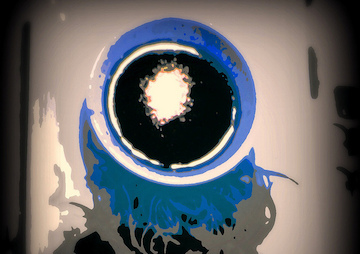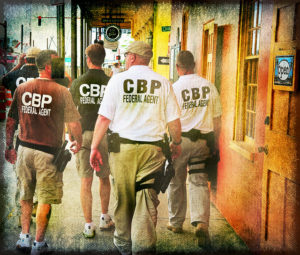The Federal Government Is Helping Police Nationwide Secretly Exploit Intrusive Technologies
Unfortunately, power loves the dark. Cali4beach / CC-BY-2.0
1
2
3
4
Cali4beach / CC-BY-2.0
1
2
3
4
Despite this, in April 2015 the Los Angeles Board of Police Commissioners approved a body-camera policy that failed to ensure future transparency, while protecting and serving the needs of the Los Angeles Police Department (LAPD). In doing so, it ignored the sort of best practices advocated by the White House, the president’s task force on policing, and even the Police Executive Research Forum, one of the profession’s most respected think tanks.
On the possibility of releasing videos of alleged police misconduct and abuse, the new policy remained silent, but LAPD officials, including Chief Charlie Beck, didn’t. They made it clear that such videos would generally be exempt from California’s public records law and wouldn’t be released without a judge’s orders. Essentially, the police reserved the right to release video when and how they saw fit. This self-serving policy comes from the most lethal large police department in the country, whose officers shot and killed 21 people last year.
Other departments around the country have made similar moves to ensure control over body camera videos. Texas and South Carolina, among other states, have even changed their open-records laws to give the police power over when such footage should (or should not) be released. In other words, when a heroic cop saves a drowning child, you’ll see the video; when that same cop guns down a fleeing suspect, don’t count on it.
Curiously, given the stated positions of the president and his task force, the federal government seems to have no fundamental problem with that. In May 2015, for example, the Justice Department announced competitive grants for the purchase of police body cameras, officially tying funding to good body-cam-use policies. The LAPD applied. Despite letters from groups like the ACLU pointing out just how poor its version of body-cam policy was, the Justice Department awarded it $1 million to purchase approximately 700 cameras — accountability and transparency be damned.
To receive public money for a tool theoretically meant for transparency and accountability and turn it into one of secrecy and impunity, with the feds’ complicity and financial backing, sends an unmistakable message on how new technology is likely to affect America’s future policing practices. Think of it as a door slowly opening onto a potential policing dystopia.
Hello Darkness, Power’s Old Friend
Keep in mind that this article barely scratches the surface when it comes to the increasing numbers of ways in which the police’s use of technology has infiltrated our everyday lives.
In states and cities across America, some public bus and train systems have begun to add to video surveillance, the surreptitious recording of the conversations of passengers, a potential body blow to the concept of a private conversation in public space. And whether or not the earliest versions of predictive policing actually work, the law enforcement community is already moving to technology that will try to predict who will commit crimes in the future. In Chicago, the police are using social networking analysis and prediction technology to draw up “heat lists” of those who might perpetuate violent crimes someday and pay them visits now. You won’t be shocked to learn which side of the tracks such future perpetrators live on. The rationale behind all this, as always, is “public safety.”
Nor can anyone begin to predict how law enforcement will avail itself of science-fiction-like technology in the decade to come, much less decades from now, though cops on patrol may very soon know a lot about you and your past. They will be able to cull such information from a multitude of databases at their fingertips, while you will know little or nothing about them — a striking power imbalance in a situation in which one person can deprive the other of liberty or even life itself.
With little public debate, often in almost total secrecy, increasing numbers of police departments are wielding technology to empower themselves rather than the communities they protect and serve. At a time when trust in law enforcement is dangerously low, police departments should be embracing technology’s democratizing potential rather than its ability to give them almost superhuman powers at the expense of the public trust.
Unfortunately, power loves the dark.
Matthew Harwood is senior writer/editor with the American Civil Liberties Union. His work has appeared at Al Jazeera America, the American Conservative, the Guardian, Guernica, Salon, War is Boring, and the Washington Monthly. He is a TomDispatch regular.
Jay Stanley is senior policy analyst with the American Civil Liberty Union’s Speech, Privacy, and Technology Project. He is the editor of the ACLU’s “Free Future” blog and has authored and co-authored a variety of ACLU reports on privacy and technology topics.
Follow TomDispatch on Twitter and join us on Facebook. Check out the newest Dispatch Book, Nick Turse’s Next Time They’ll Come to Count the Dead, and Tom Engelhardt’s latest book, Shadow Government: Surveillance, Secret Wars, and a Global Security State in a Single-Superpower World.
Copyright 2016 Matthew Harwood and Jay Stanley Your support matters…Independent journalism is under threat and overshadowed by heavily funded mainstream media.
You can help level the playing field. Become a member.
Your tax-deductible contribution keeps us digging beneath the headlines to give you thought-provoking, investigative reporting and analysis that unearths what's really happening- without compromise.
Give today to support our courageous, independent journalists.





You need to be a supporter to comment.
There are currently no responses to this article.
Be the first to respond.